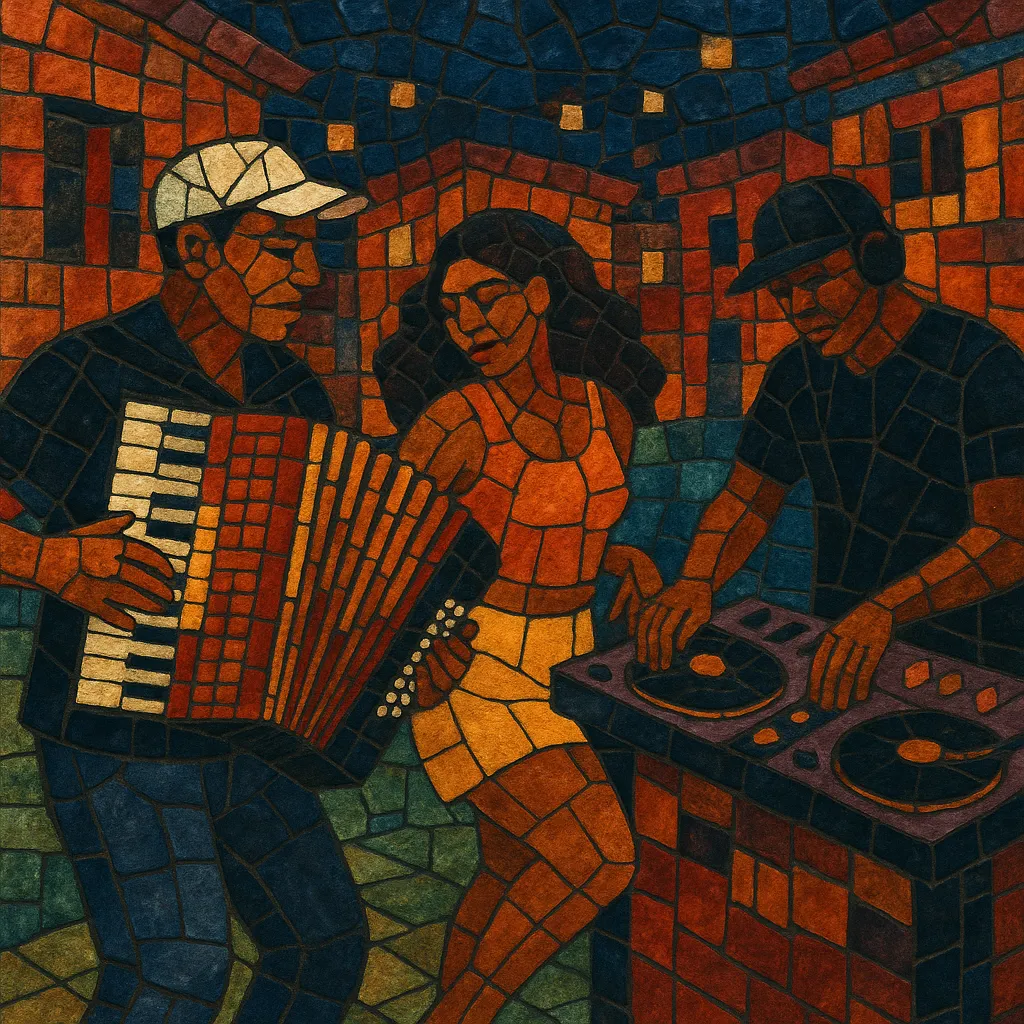Forró de favela is an urban, electronic offshoot of Northeastern Brazil’s traditional forró that took shape inside low‑income neighborhoods (favelas). It keeps the genre’s signature accordion riffs and syncopated swing but replaces or reinforces the zabumba/triangle groove with drum‑machine patterns, booming sub‑bass, and DJ callouts borrowed from baile funk.
Typically fast and dance‑forward, tracks run from roughly 120–150 BPM. Melodies are catchy and concise, harmonies loop in a few diatonic chords, and vocals often revolve around romance, partying, everyday street life, and playful double‑entendres. The style thrives at street bailes, paredão (car‑sound) gatherings, and on DIY digital channels (YouTube, WhatsApp packs, SoundCloud), where independent DJs and MCs circulate edits, remixes, and short “vinhetas” (DJ tags) at high volume.
Forró de favela emerged in the 2010s across Brazil—especially in the Northeast (Ceará, Pernambuco, Bahia)—as local DJs and MCs fused the melodic core of forró with the percussive, bass‑heavy energy of funk carioca. Affordable keyboards, cracked VSTs, and drum machines enabled bedroom producers to emulate the sanfona (accordion) and zabumba feel while programming tamborzão‑style kicks and claps. The result was a gritty, party‑primed variant that felt at home both in forró dances and in street bailes.
The style spread through informal networks: WhatsApp groups, DJ pools, YouTube channels, and SoundCloud. Paredão (automotive sound‑system) culture helped standardize loud masters with exaggerated low end, and short DJ tags/loops encouraged viral circulation. Producers frequently cut “forró de favela” edits of existing hits, accelerating tempos, adding funk drums, and creating call‑and‑response hooks ideal for dance challenges.
By the late 2010s and early 2020s, forró de favela intersected with piseiro (a minimal, loop‑driven branch of forró) and mainstream pop/funk collaborations. Well‑known forró and piseiro performers recorded over funk‑leaning beats, while funk MCs adopted forró chord loops and accordion riffs. This two‑way exchange nudged radio/pop playlists and helped codify the style’s identity as a hard‑hitting, dance‑centric bridge between regional forró tradition and contemporary favela club aesthetics.


